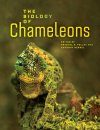By: Krystal A Tolley(Author), Anthony Herrel(Author)
275 pages, 16 plates with colour photos and colour illustrations; 3 b/w photos, 16 b/w illustrations, 10 tables
![The Biology of Chameleons The Biology of Chameleons]()
Click to have a closer look
About this book
Contents
Customer reviews
Biography
Related titles
About this book
They change color depending on their mood. They possess uniquely adapted hands and feet distinct from other tetrapods. They feature independently movable eyes. This comprehensive volume delves into these fascinating details and thorough research about one of the most charismatic families of reptiles – Chameleonidae. Written for professional herpetologists, scholars, researchers, and students, The Biology of Chameleons takes readers on a voyage across time to discover everything that is known about chameleon biology: anatomy, physiology, adaptations, ecology, behavior, biogeography, phylogeny, classification, and conservation. A description of the natural history of chameleons is given, along with the fossil record and typical characteristics of each genus. The state of chameleons in the modern world is also depicted, complete with new information on the most serious threats to these remarkable reptiles.
Contents
Contributors
Foreword
1 Biology of the Chameleons: An Introduction
Krystal A. Tolley and Anthony Herrel
2 Chameleon Anatomy
Christopher V. Anderson and Timothy E. Higham
2.1 Musculoskeletal Morphology
2.2 External Morphology and Integument
2.3 Sensory Structures
2.4 Visceral Systems
3 Chameleon Physiology
Anthony Herrel
3.1 Neurophysiology
3.2 Muscle Physiology
3.3 Metabolism, Salt, and Water Balance
3.4 Temperature
3.5 Skin Pigmentation, Color Change, and the Role of Ultraviolet Light
3.6 Developmental Physiology
4 Function and Adaptation of Chameleons
Timothy E. Higham and Christopher V. Anderson
4.1 Locomotion
4.2 Feeding
5 Ecology and Life History of Chameleons
G. John Measey, Achille Raselimanana, and Anthony Herrel
5.1 Habitat
5.2 Life-History Traits
5.3 Foraging and Diet
5.4 Predators
6 Chameleon Behavior and Color Change
Devi Stuart-Fox
6.1 Sensory Systems and Modes of Communication
6.2 Color Changes
6.3 Social and Reproductive Behavior
6.4 Sexual Dimorphism: Body Size and Ornamentation
6.5 Antipredator Behavior
7 Evolution and Biogeography of Chameleons
Krystal A. Tolley and Michele Menegon
7.1 Evolutionary Relationships
7.2 Diversity and Distribution
7.3 Regional Diversity
7.4 Patterns of Alpha Diversity
7.5 Patterns of Beta Diversity
8 Overview of the Systematics of the Chamaeleonidae
Colin R. Tilbury
8.1 Evolution of Methodology in Chameleon Taxonomy
8.2 Current Status of Taxonomy of the Chamaeleonidae
8.3 Subfamilial Groupings within Chamaeleonidae
8.4 Overview of Extant Genera
9 Fossil History of Chameleons
Arnau Bolet and Susan E. Evans
9.1 Phylogenetic Relationships of Iguania and Acrodonta
9.2 Fossil Record of Acrodonta
9.3 Origins of Acrodonta
9.4 Origins of Chamaeleonidae
10 Chameleon Conservation
Richard Jenkins, G. John Measey, Christopher V. Anderson, and Krystal A. Tolley
10.1 Conservation Status of Chameleons
10.2 Trade in Chameleons
10.3 Chameleons and Global Change
10.4 The Way Forward
Appendix
Abbreviations
References
Photo Credits
Index
Customer Reviews
Biography
Krystal A. Tolley is Principal Scientist, Molecular Ecology Program in Applied Biodiversity Research of the South African National Biodiversity Institute. Her research focuses on understanding the historical processes that generate patterns of diversity and lead to species radiations of reptiles and amphibians in southern Africa.
Anthony Herrel is a permanent researcher at the Centre Nationale de la Recherche Scientifique (CNRS) and the head of the Function and Evolution team of the Unite Mixed de Recherche (UMR) 7179, based at the Museum national d'Histoire naturelle in Paris.
By: Krystal A Tolley(Author), Anthony Herrel(Author)
275 pages, 16 plates with colour photos and colour illustrations; 3 b/w photos, 16 b/w illustrations, 10 tables
"[A] synthetic picture of the evolution and biology of an enigmatic group of lizards, The Biology of Chameleons is timely because there have been substantial recent developments in the systematics and taxonomy of chameleons, and we now have a far greater understanding of selective pressures driving color change and life history."
- Martin Whiting, Macquarie University, Australia
"The Biology of Chameleons will become a standard reference for all scholars interested in these reptiles [...] yet it will be understandable, in great part, to a more general audience as well."
- Miguel Vences, University of Braunschweig, Germany






































